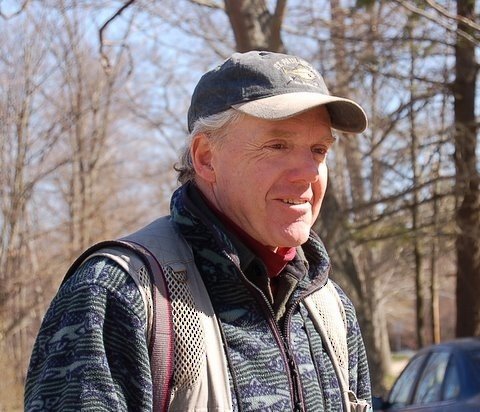Jim Berry studies birds, other wildlife, and their ecological relationships, with special interests in nesting biology and ornithological history. He enjoys writing about natural history and making related slide presentations, particularly on nesting birds. He has been active in the Nest Record Program of the Cornell Laboratory of Ornithology since 1975, has participated on breeding-bird-atlas projects in seven states, and has led field trips for various groups most of his adult life. He coordinated the field work in Essex County for the second Massachusetts Breeding Bird Atlas project.
Affiliations include the Nuttall Ornithological Club and the Association of Field Ornithologists, on whose councils Jim has served, and the American Birding Association. He has been a department head on the editorial board of the New England-based journal Bird Observer and is a former president of the Essex County Ornithological Club. Jim compiled the Newburyport and Cape Ann Christmas Bird Counts for about 10 years each. He has published articles on nesting birds and Christmas Bird Counts in Birding magazine. He is a frequent contributor to Bird Observer, where he published a series of articles on significant nesting records in Essex County.
In the conservation arena, Jim was a member of the Conservation Commission in his adopted town of Ipswich, Mass. and has worked with local public school classes to identify and certify vernal pools for state protection. He founded the Ipswich Open Space Committee in 1991 and was the editor and principal author of the town’s five-year open-space master plans in 1994 and 2000. He served six years on the board of the Essex County Greenbelt Association, the county’s principal land trust.
Jim did his undergraduate and graduate work in political science at Miami University and Cornell University, respectively, and was an officer in the U.S. Navy from 1965-67. He retired in 1999 from a 30-year career in the federal government, where he worked in human resources in the U.S. Civil Service Commission (later the Office of Personnel Management), the Federal Aviation Administration, and the U.S. Environmental Protection Agency. About half of those years were in management positions. In his last assignment, in the New England Region of EPA, Jim doubled as the agency’s regional coordinator for Partners in Flight, an international consortium attempting to preserve bird populations through protection of their habitats.
